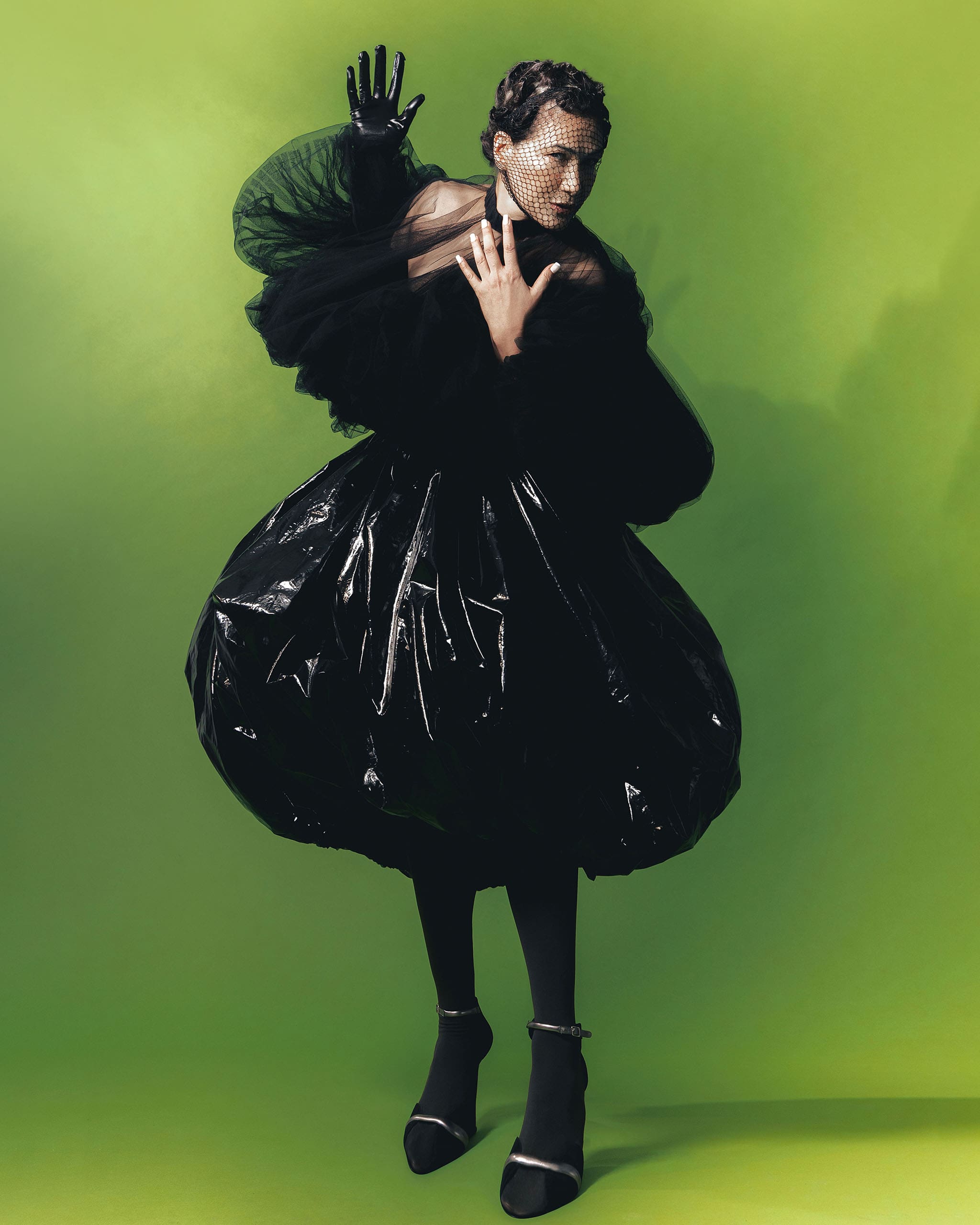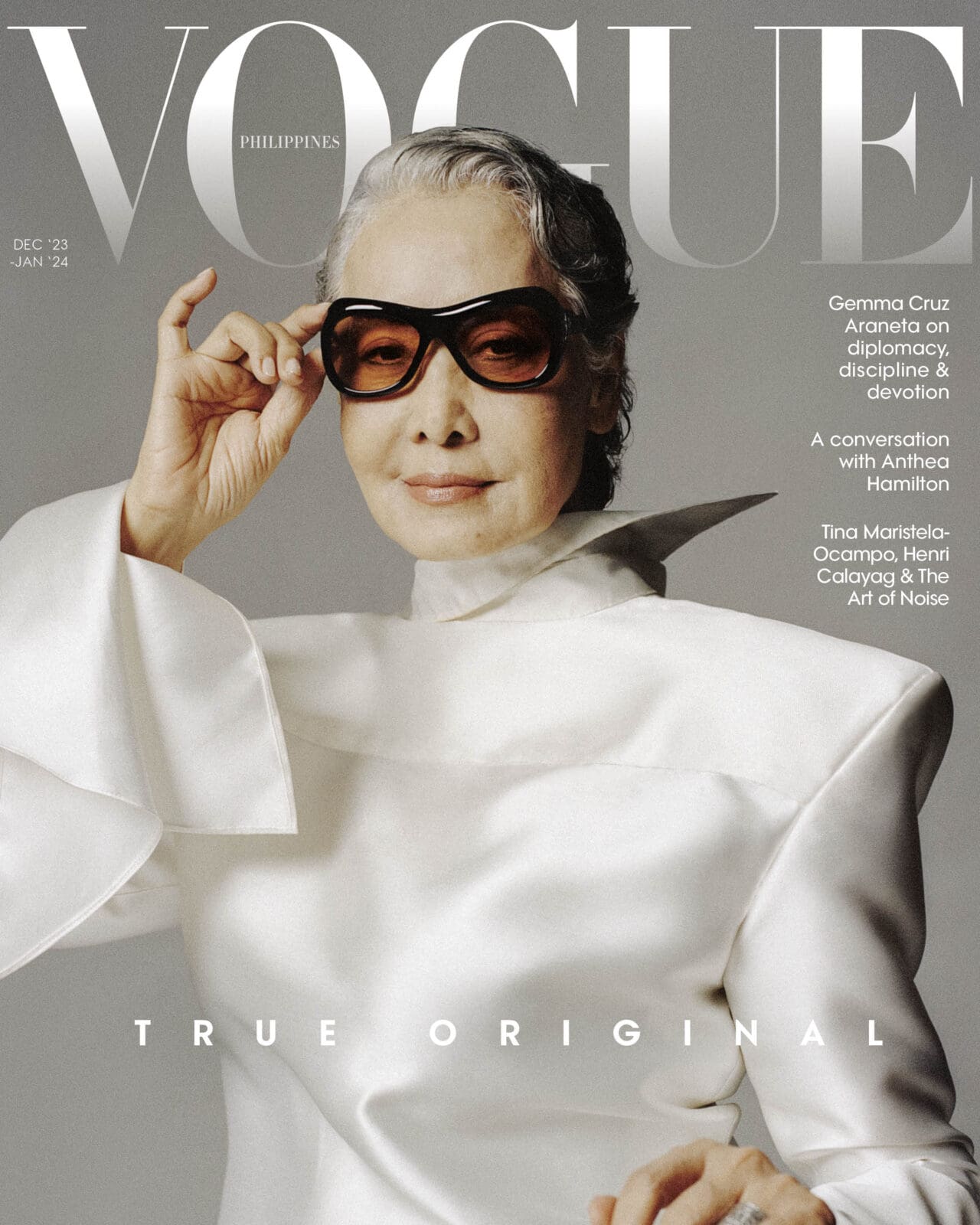Photo by Borgy Angeles
The ’70s and early ’80s were an invigorated time in Philippine fashion. Among its stalwarts were beauty architect Henri Calayag and muse Tina Maristela Ocampo who brought to every runway show, fashion editorial, and campaign a distinct brand of artistry, fire, and soul.
Within the space of hair and makeup artistry, Henri Calayag is regarded as a legend.
But years before opening his own salon, the Midas of Manila beauty was first, a Paper Doll in the 1970s. Along with Fanny Serrano, Angel Bautista, Benny Gamboa, Biba Varona, Boots Babushka, Edcel Reyes, Klakling, Mari Boquer, Micky Tanaka, Peter Estocado, and Xaviera Petelle, Henri ignited the drag culture movement in the Philippines, decades before Ru Paul’s rise to global fame.
It was a natural progression for Henri to dive into the world of fashion and beauty by the early ’80s. “Everything that I know about creative direction, styling, and beauty, stems from my experience in theater,” he says. “In performance art, every detail counts from the tops of your head to the tips of your toes.” After formal training at the Marinella School of Cosmetology, Henri immediately dabbled in fashion editorials and runway shows. “It began when I did the hair and makeup for the Fashion Design Group fashion show,” remembers Henri.
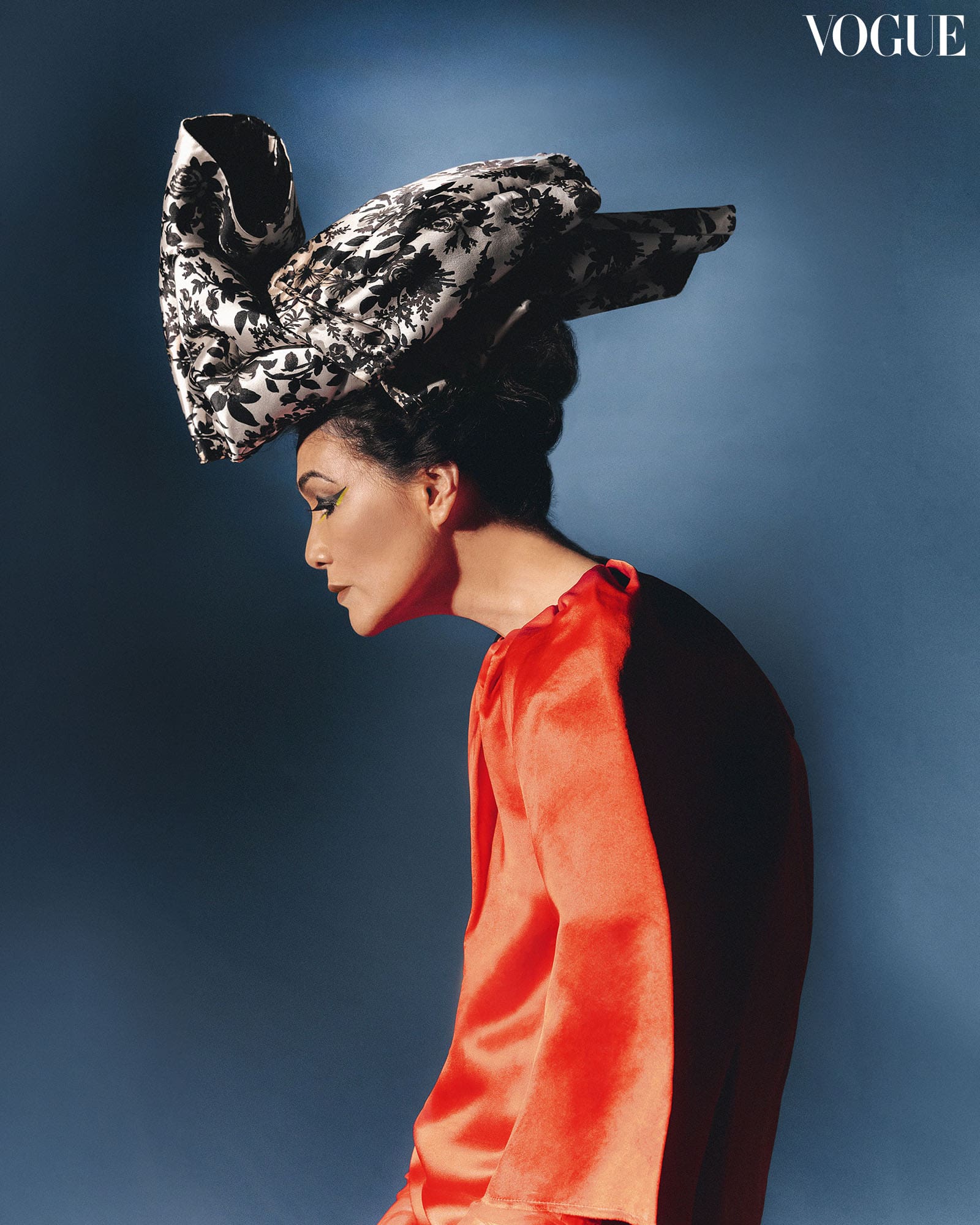
The show presented season’s looks from Philippine design luminaries like Auggie Cordero, Inno Sotto, Mike dela Rosa, Cesar Gaupo, Noli Hans, to name a few. Henri reminisces how there were only a handful of professional models at shows back then. “They would have to do several changes every show. Backstage, it was just me and my assistant, Yolly, working on all their looks. Our only tools were styling lotion and gel. We also had limited access to references, so we really had to tap into our imagination,” he shares.
Of the models he’s worked with, Henri found a muse in Tina Maristela Ocampo. “There is something performative about the way Tina would walk the runway or pose in front of a camera. It’s not just walking or posing for her,” he says. Having been pulled out of retirement (from modeling) for the Vogue Philippines editorial, Tina once again lent her distinct brand of artistry to the set, where she embodied the emotions, nuances, and expressions that would give a voice to the silence and stillness of photographs.
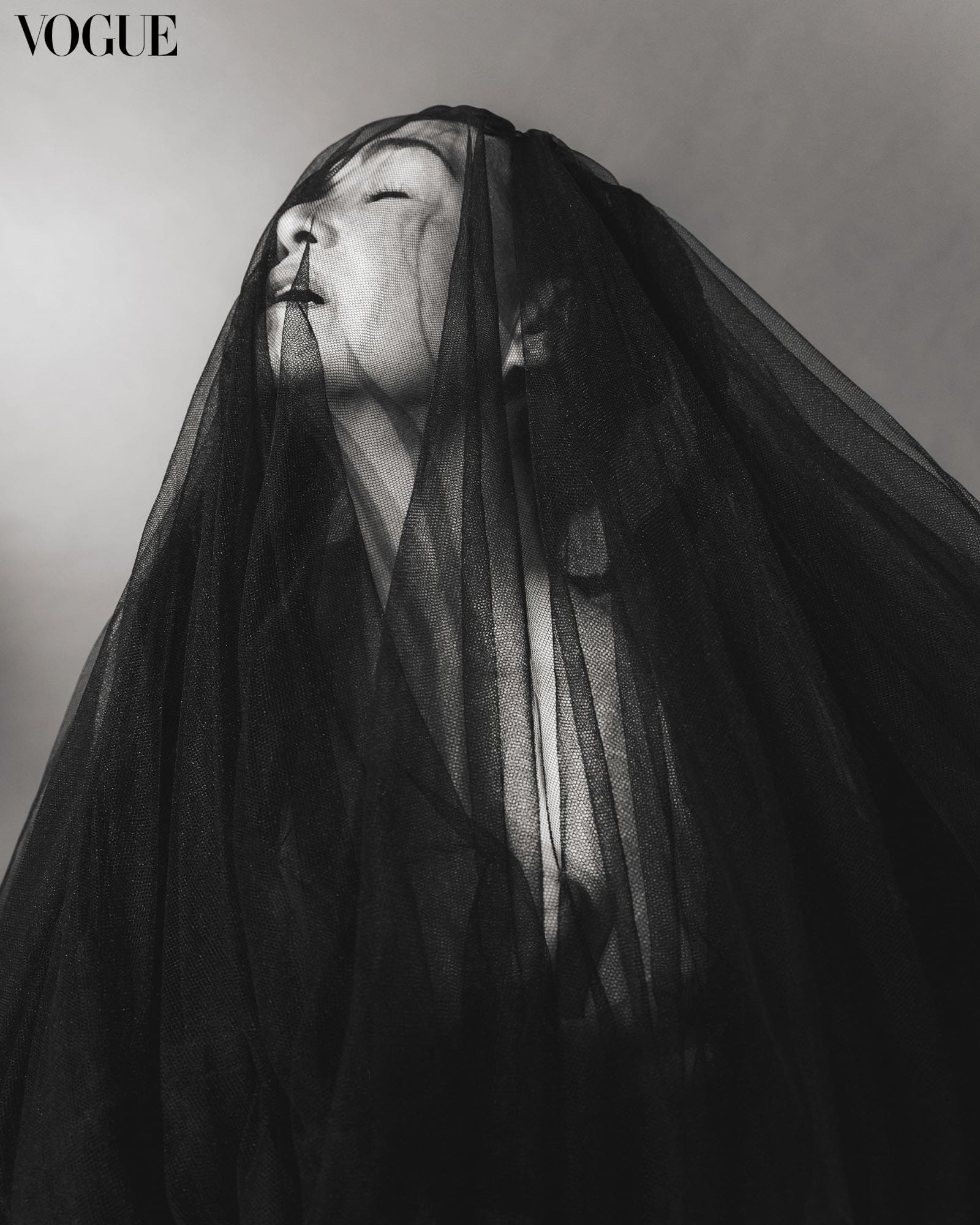
“It’s been 30 years since I last modeled,” reveals Tina. “More recent shoots I’ve done were mostly for features or profiles.” After getting married in 1989, she slowly transitioned into other roles as wife, mother, businesswoman, designer, and fashion icon. With husband Ricco Ocampo, she went on to develop pioneering fashion retail concepts like Mix, The Black Shop, and i2i. Tina also channeled her creative energy to designing bags and furniture. In the post-modelling phase of her life, she continued to be photographed and graced covers on the merits of the game-changing ventures she’s successfully launched.
Tina first broke into the fashion scene at around the same time as Henri. “I did a show for Ben Farrales and that was where my career took off,” she shares. Following her debut, her calendar began to fill up with bookings for runway shows and shoots. She was often the choice model for finales, closing every show with a master’s flourish. On the runway, designers and fashion observers remarked that she held the swagger and elegance of Inès dela Fressange. “The job demanded passion and fire. It wasn’t just about having a pretty face or being tall and skinny. Without the fire, you were bound to be overshadowed.”
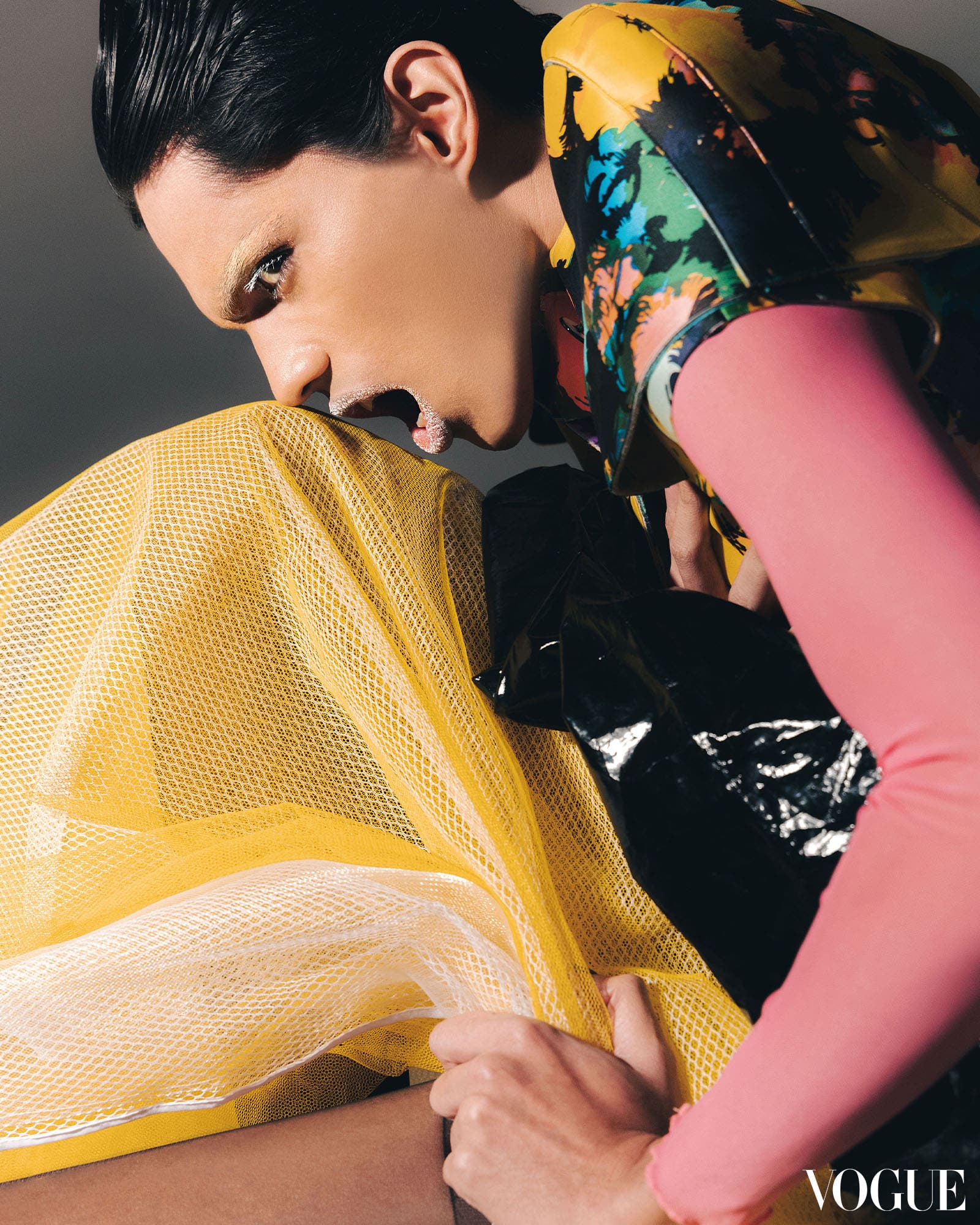

It wasn’t just on stage where intense dedication to the craft manifested. “We went above and beyond for the love of the craft,” emphasizes Henri. While textile, garments, and exports industries prospered in the early ’80s, rates and standards for artists in the fashion realm left much to be desired. “I was a student back then so in between classes, I would head out to do the shows or go to rehearsals. When I started in 1981, I got paid PHP50 for luncheon shows,” recounts Tina. “Gala shows demanded more showmanship, and rehearsals would sometimes go from midafternoon till 3AM.” These grand fashion spectacles required at least five rehearsals, and models were paid PHP1,500.
Apart from doing hair and makeup, Henri also often took on the task of a creative director. He clarifies, “I wouldn’t say I was directing the entire shoot or dictating the look of the show. Ultimately, it’s about having rapport with the team. The photographer, the stylist, the model. Everyone on set must be on the same page, speaking the same language, working towards one vision.” At the Vogue Philippines shoot, for instance, Henri needed only to prompt Tina with a few words: Salvador Dali. Instantly, both were tuned in to the same frequency and energy. Just like in the old days.
“There can’t be a disconnect when you want to bring fire, passion and soul to an image“
Henri explains that his creative process is more intuitive and instinctive. “I see the location or the clothes and something just clicks. I envision every detail down to the cropping and lighting,” he furthers. The uncanny ability to pick up on these subtle queues, allows Tina to embody Henri’s ideas in front of the camera. “The job is to put on a performance and translate the clothes,” she says. Anything less is a disservice.
Dynamics and symbiosis between Philippine creatives during their time have resulted in some of the most indelible images in the history of Philippine fashion. Henri’s fashion editorials, shot by master lensman Jun de Leon, saw the birth of countless iconic campaigns. Tina, who has stood in front of Jun’s camera numerous times, reminisces, “As a model, you need to connect with the clothes. More than that, your job is to connect with the lens and the voice behind the lens. There can’t be a disconnect when you want to bring fire, passion and soul to an image.”


Notorious for his tough love and uncompromising demand for excellence on set, de Leon fondly remembers, “I once sent them home during a shoot, but they came back with a vengeance. Henri and Tina always inspired me to push the boundaries. At one point, I remember painting the entire rooftop of Holiday Inn white because I was so inspired.” He was served a restraining order shortly after. “If I were to publish a book about Philippine fashion or do one last fashion editorial, it would definitely have to be with them.”
Both Henri and Tina also spent a large portion of their careers collaborating with award-winning photographer Neal Oshima. “He was flawless,” they both agree. Their creative play on film instilled a tireless pursuit for perfection. “You had to get it right at the shoot. There was no such thing as post production or retouching. Henri and Tina were pros and during those early stages of the industry, these were rare.” Neal details that Tina did not just wear the clothes and look beautiful in front of his camera. “She understood the look and feel of the clothes.” Henri, he says, was always quick on his feet. He also knew how to create looks that serviced the garments. “They were always spot on,” affirms Neal. “There was also that sense of congruence when working with them.”

At the peak of their careers, Henri and Tina both decided to venture into other endeavors. “I’m a believer in the saying, ‘Quit while you’re on top,’” states Henri. “It’s also healthy when you have the grace to mentor and make room for emerging talents to thrive and grow.” He is now fully focused on his salon, and a select number of special projects. Recently, he designed and engineered the sumo-inspired looks for Ivarluski Aseron’s show at the Red Charity Gala. As of this writing, Henri is also occupied preparing for the 35th anniversary show of Randy Ortiz.
Before hanging up her model stilettos, Tina co-founded the Professional Modeling Association of the Philippines (PMAP). “I felt there was a need to standardize rates and the working hours for models,” she discloses. The first of its kind in the world, this hybrid between a union and association endeavors to “uplift, protect and professionalize the modeling industry in the Philippines.” It was also a platform for Tina to pass on the torch through mentorship.
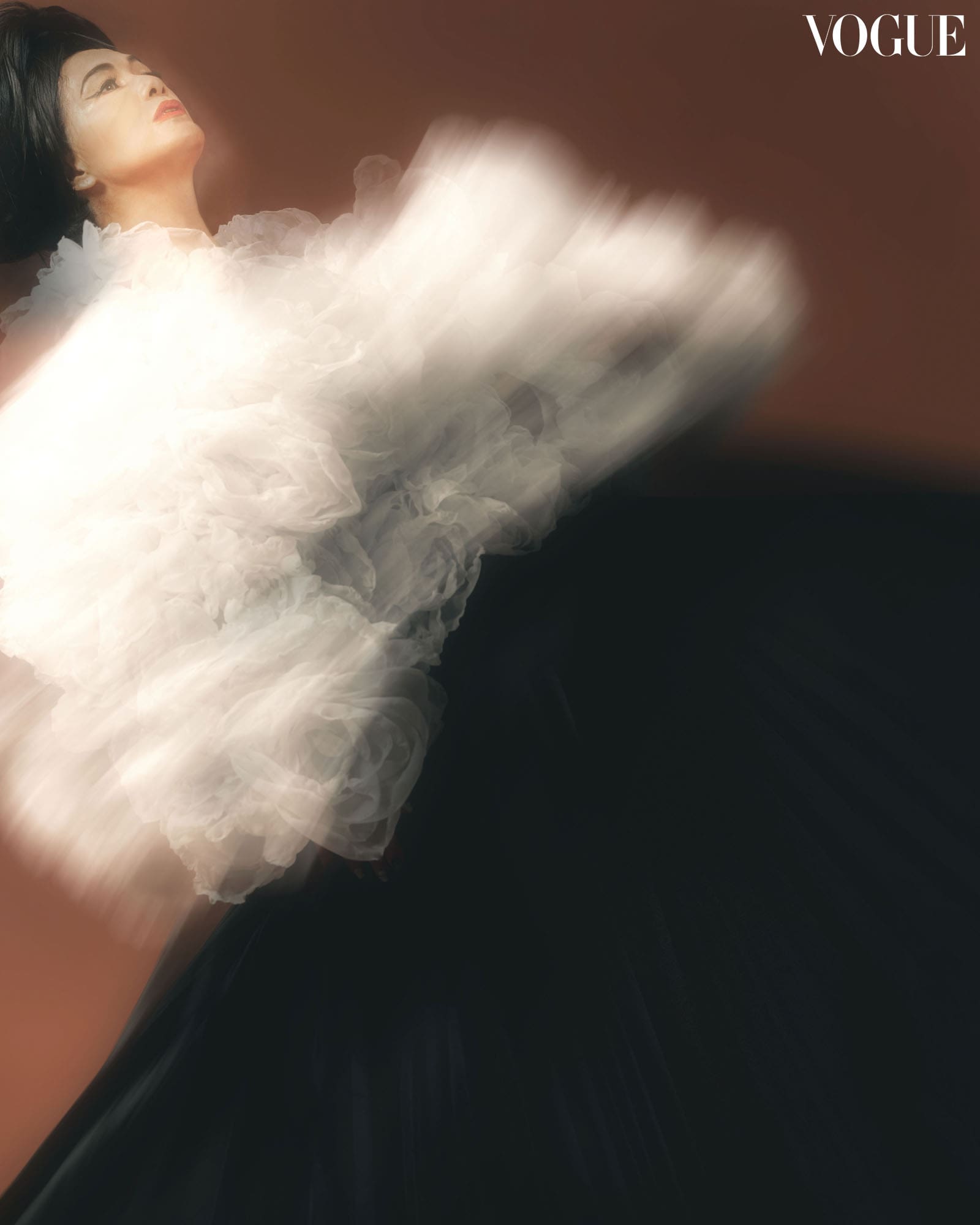
“It was such an interesting experience to work with the new guards of fashion. During the shoot, a seamless marriage of the past and the present, was represented by the looks. Pam Quinoñes beautifully brought together pieces from my personal archives with newer ones,” Tina says. Her natural inclination as a mentor surfaces as she casually throws in the idea of a workshop for young fashion creatives.
Henri concurs. “There are differences and there are similarities between these two generations. If the soul, passion, and fire from our generation were combined with the talent, efficiency and systemic ways of working today, the Philippine fashion would be unstoppable.”
By BIANCA R. SALONGA. Photographs by BORGY ANGELES. Beauty Editor: JOYCE OREÑA. Fashion Director: PAM QUIÑONES. Contributing Creative & Beauty Director: Henri Calayag. Makeup & Hair: Eric Maningat, Henri Calayag. Models: Suraj Aku, Tina Maristela Ocampo, Yaofa Dela Cruz. Art Director: Jann Pascua. Producer: Anz Hizon. Nails: Extraordinail. Multimedia Artist: Gabbi Constantino. Production Assistants: Bianca Custodio, Bianca Zaragoza. Photographer’s Assistants: Karl Mariano, Pao Mendoza. Stylist’s Assistants: Geno Espidol, Neil De Guzman, Niña Cuyana. Production Design Assistants: Jan Abal, John Amon, Nicomedes Narte.
